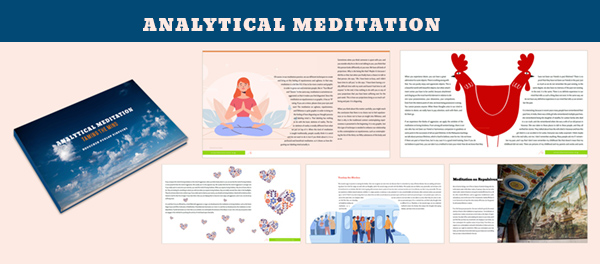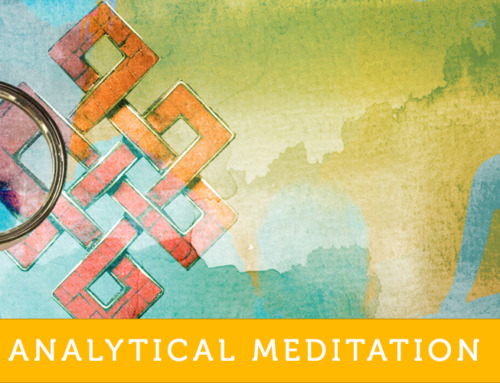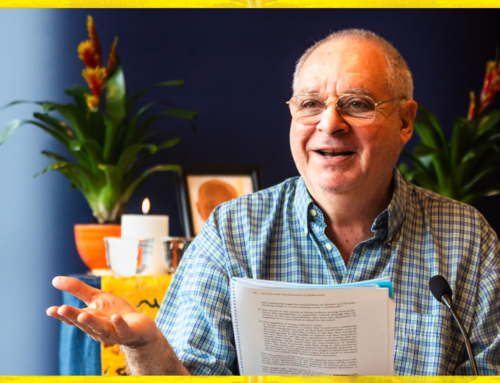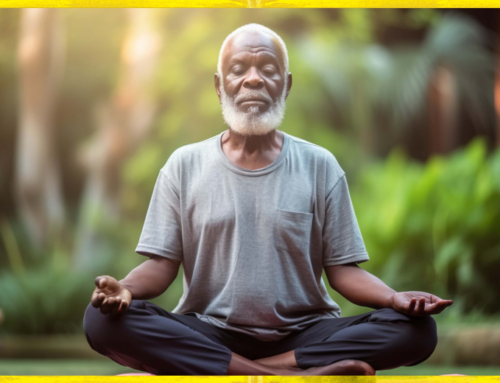What is Analytical Meditation ?
Sign up and receive the detailed instruction on Analytical Meditation: Taming the Mind by Dzogchen Ponlop Rinpoche.
What is analytical meditation?
The first step in a session of analytical meditation thus is the proper attitude and motivation. The second step is to sit in the correct posture. For analytical meditation, the physical posture is straightforward. Simply sit with crossed legs, keeping your back as straight as possible while at the same time staying relaxed. The upper part of the body should feel light, while the lower part of the body should feel more weighty and stable.
After taking our seat with good meditation posture, we begin with the threefold cleansing of the stale breath. Hold your hands palms down on your knees. Place your thumbs at the base of your ring fingers. As you slowly and deeply inhale through your nostrils, slowly curl your fingers around your thumbs so that your hands are in loose fists with your thumbs tucked inside. Exhale through your nostrils. Do not force your exhalation; it should be gentle and slow, with some added force at the end. As you exhale, extend your fingers and thumbs at once, but without violence. Then slowly inhale again and close your hands as before. Do this inhalation and exhalation three times. On the first breath, imagine that you are gathering and expelling all physical obstacles to meditation. On the second breath, gather and expel all emotional obstacles. On the third breath, gather and expel all mental obstacles. Be sure to maintain your physical posture, especially when you exhale, staying centered and upright in your seat.
Following the cleansing breaths, we engage in a brief session of resting meditation. We do this meditation in order to free our minds of coarse agitation or torpor. One’s awareness may be scattered or outwardly oriented, and we want to draw it inward. Or we may be feeling drowsy and need to rouse ourselves in order to practice well. We want to bring our minds to a point of stillness and clarity.
Focus your attention on the coming and going of your breath. One common method of working with the breath is to count the breath, one count for each cycle of inhalation and exhalation. Count from one to ten and then start over. Or keep counting as high as you like. When you lose the count, begin again. Another method you might use is to relax on the inhalation, and when you exhale, mentally recite a long hung with the out breath.
Bring your mind to rest. When you have the feeling that your mind has come to a state of stillness, then recall that now is the time to do analytical meditation. Through resting meditation, you establish a calm and lucid mind. Arise within that calm and lucid mind and begin your analysis.
Sometimes when we reach the point where the mind is resting, we might want to stay in that peaceful place, and we do not wish to engage in analytical meditation. When this happens, it is important to give rise to the aspiration to engage in analytical meditation.
What is Analytical Meditation ?When we do analytical meditation, which involves effort and reasoning, it is very important to be mindful that one’s awareness remains in the center of one’s body. Otherwise, we will just engage in a superficial conceptual investigation rather than in genuine analytical meditation.
Lastly, when we do analytical meditation, which involves effort and reasoning, it is very important to be mindful that one’s awareness remains in the center of one’s body. Otherwise, we will just engage in a superficial conceptual investigation rather than in genuine analytical meditation.
When your mind is resting and clear, proceed to the analysis. How do we conduct the analysis? We select an appropriate example of the object of analysis and examine it using our reasoning.
~ Acharya Lama Tenpa Gyaltsen
Now read the detailed instruction on Analytical Meditation: Taming the Mind by Dzogchen Ponlop Rinpoche by downloading the e-book right here.





